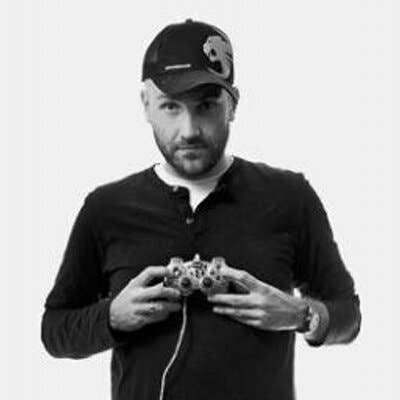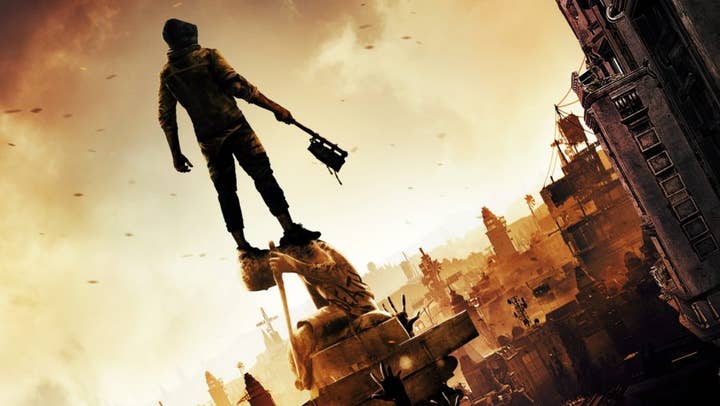Techland: “It's still not a corporate studio. We still get crazy sometimes”
The Dying Light 2 developer on the rise of the Polish industry, and growing from 200 staff to 300 in just a few years
E3 2019 was one hell of an advert for the Polish games industry. CD Projekt headlined with Cyberpunk 2077, CI Games showed us Sniper Ghost Warrior Contracts, People Can Fly teased Outriders, Bloober Team intrigued us with Blair Witch, Phobia gave us more Carrion... It seemed that wherever you went, whatever press conference you found yourself watching, Poland was represented.
"The Polish press went crazy about E3," says Tymon Smektala, lead designer at Techland, who was showcasing the other major Polish game of E3, Dying Light 2. "We were at the Microsoft conference, at the Square Enix conference, CD Projekt was also at the Nintendo conference [with The Witcher 3], which was a first for a Polish developer.
"The successes of Polish games is something that is making other people think that maybe they can do this as well. There are big players like us and CD Projekt, but there are also smaller companies that manage themselves very well. Companies like 11 bit with Frostpunk and This War of Mine."

He continues: "I think there is this attitude in Poles generally where we want to prove to the world that we're important. People should notice us. I don't want to draw too much on the history of Poland, because it might be too simplistic. But for many years we were looking at the Western world and seeing that these guys were doing these amazing things, and we weren't doing those things. But we wanted to. And now there's an urge to prove to the world that we are here and we know how to make games."
E3 went some way toward confirming that. From the indie to the mid-tier, there was plenty of intriguing projects on display. But it was (naturally) the AAA projects that grabbed the headlines, and for all the excitement around Cyberpunk 2077, Dying Light 2 was arguably the more surprising.
Techland's sequel won more than 40 game of the show awards and -- judging by the non-playable demo -- looks to be a major step-up from the original (which was a surprise hit back in 2015). The studio has come a long way from its first big zombie project, Dead Island, which arrived to mixed reviews back in 2011.
"I think there is this attitude in Poles generally where we want to prove to the world that we're important"
"We did some marketing presentations for our partners where we showed the evolution from Dead Island to Dying Light and Dying Light to Dying Light 2," Smektala tells us. "So there is this continuity. But I think each game does something different, and each game is its own beast. Dead Island was basically a first-person hack-and-slash with zombies. Dying Light was more of an action game, but we didn't have the capacity to build a game with a narrative or a scale as big as this new one. But the success of Dying Light, how it was received, gave us confidence that we know what we are doing, that we should stop questioning ourselves. That is how Dying Light 2 came about."
It also helped that the first Dying Light just kept on selling. The game sold more in 2018 than in 2017, and more in 2017 than 2016.
"It is mostly down to word-of-mouth, and we have a vocal community that really tries to tell everyone in the world that they love this game and that you should love it as well," adds Smektala. "I am not sure how this year stacks up. We did the '10-in-12' campaign last year, which was 10 DLCs that we released over the span of 12 months. So I'm not sure about this year, because it's time to focus on Dying Light 2.
"But we had a meeting right before E3 where we said we still wanted to add things to the first one. And there's now a small team which is working on additional stuff that will happen in Dying Light."
The continued success of one project also provides a level of financial stability that can benefit a sequel. There was no pressure at Techland to get Dying Light 2 out quickly, and it allowed the firm to test things out with the first game's audience, too.
"Supporting a game like Dying Light for such a long time allows us to be slightly more crazy, and slightly more creative"
"We supported the game for two reasons. The first is that we believe in our community, and we really believe they will be the most essential part for us getting the word out about Dying Light 2. The other thing is that supporting a game like Dying Light for such a long time allows us to be slightly more crazy, and slightly more creative with some things, and also test some ideas and gameplay elements that we're not sure about.
"If we had an idea we're unsure about for Dying Light 2, we could mimic that idea to some extent in support of the first game and see how it works. We can see what people find attractive and what's unattractive to them."
The most striking element of Dying Light 2 is in how narrative choices impact the game. The decisions players make will determine what enemies they see and what part of the world is accessible to them. Techland revealed that gamers will only experience 50% of the game during their first play through -- a fact that garnered plenty of press attention at E3.

"It started simpler," Smektala explains. "When we were analysing Dying Light, we realised we had created this game that was quite sandboxy. It gives you a lot of options in how to solve the gameplay problems. However, the narrative was very linear. Also with the narrative, which was not so cool, the main protagonist [Kyle Crane] was making a lot of decisions that were quite controversial. There were a lot of times in Dying Light where you wanted Kyle to choose something but the scriptwriters had decided something different. So the dream with this game is that we could give you the same amount of freedom in the narrative as we have in the gameplay.
"We were initially only thinking about the narrative. But with the technological advancements of our new engine -- the C-Engine -- we realised we were able to do more. So for instance, what if these decisions didn't just change the narrative, but the sandbox space itself? We started working on it and we realised it was a powerful feeling for the player, because they make that decision and they discover the world around them has changed due to it.
"With Dying Light 2 the company grew so much, we got so many developers, that it became really difficult for us to manage all of that"
"They can climb to the top of the highest building, look around and go: 'Wow, I made this. What surrounds me is the outcome of my choices.' This really excited the heck out of us, and it was an idea that wasn't designed for the project from the start. But around two years ago we realised this is something we can and should do."
If players can only experience 50% of the game during a playthrough, does that mean Techland had to build double the amount of content they'd usually have to?
"Yes and no. This is a AAA, high budget, open-world game. People will expect it to have a lot of content. Yes, we have to do more than in a regular game, but it's just us making reasonable decisions over what should be part of the choices and consequences and what shouldn't be. It is bigger, but it's not crazy. We are still, subjectively, like a small studio. It's about 300 people. It's not Ubisoft, where there are five studios of that size used to create Assassin's Creed or Far Cry. We did do more content, but not really two games, because that would be too much for us to do."
Even so, 300 people represents significant growth for Techland, which has increased its team size by a third since its last release. Such growth hasn't been without some pain, Smektala says candidly. Yet while the studio has changed fundamentally since the original Dying Light, that independent spirit remains.
"It has changed a lot," he concludes. "Not many people know this, but Techland started 25 years ago. It was basically a garage company with a couple of people working on games. Even with Dead Island, which was 2011, that game was done in two rooms, with 50 or 60 people. The first Dying Light was a step up for us where we had a team of about 200, but even then all the decisions were basically made by one or two guys. So it still had the feeling of a small project.
"With Dying Light 2 the company grew so much, we got so many developers, that it became really difficult for us to manage all of that. So, to be honest, we looked at outside talent, people with experience managing teams and working on huge projects. Now we have people from a couple of Western companies, such as our game director Marc Albinet, who worked at Ubisoft for many years. These people know how to work with that scale of a project. They shared their experience on how to do this, which introduced us a lot of methodologies that really made this manageable.
"There is still this guerrilla feeling to what we do. Just this morning I was texting with my friend, who is the lead level designer and is in the office, and he noticed that some people were commenting on one of our [Dying Light 2] YouTube videos, and the person hoped that there would be as many Easter Eggs in this game as there was in the first. We had a lot of them in the first game and they became almost like a signature for Dying Light. My friend said to me: 'Well, you're all at E3, the creative director isn't looking, the game director isn't looking, so I have introduced about three new Easter Eggs into the game.'
"It's still not a corporate studio. It's not a huge studio where everything is rigid and formalised. We still get crazy sometimes."

